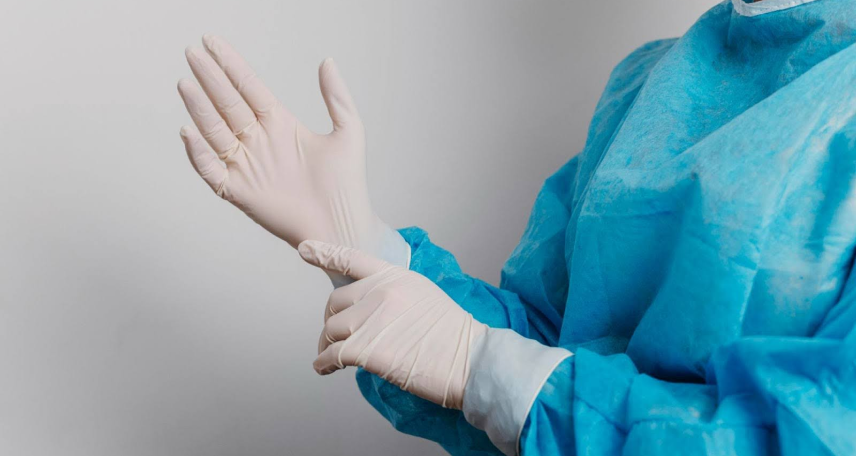by Mrudula Kulkarni
8 minutes
People & Behavior – Gowning, Glove Fingertips & Operator Environmental Monitoring
Learn aseptic gowning, glove, and EM practices for sterility and regulatory compliance in pharma cleanrooms.

The first time I stepped into a critical aseptic manufacturing cleanroom, I was struck by the precision of every move around me. Operators in full gowning suits moved with deliberate care, each gesture rehearsed and measured.
The air hummed softly with filtered airflow, and yet, despite the state-of-the-art environment, the people in the room were the true variable. I realized then that sterility isn’t just about HEPA filters, pressure differentials, or sophisticated isolators — it’s about human behavior, from how a gown is donned to how fingertips interact with materials and surfaces.
In pharmaceutical manufacturing, operators are simultaneously the guardians and potential sources of contamination. Understanding the nuances of gowning, glove fingertip behavior, and operator environmental monitoring (EM) is critical for maintaining sterility and ensuring compliance with FDA, EMA, and other global regulations.
Detailed cleanroom gowning procedures for Grade A/B areas outline validated dressing sequences and barrier techniques that minimize contamination risk from human operators.
Gowning: The First Line of Defense
Gowning is more than a ritual — it’s the first barrier between human microflora and your critical product. Incorrect gowning is responsible for a large percentage of contamination events in aseptic operations.
Reviewing common FDA 483 triggers in microbiology inspections helps teams understand how improper gowning or glove discipline often leads to regulatory citations.
Key Considerations in Gowning:
Checklist for Correct Gowning:
- Hands thoroughly washed and sanitized
- Gown and hood inspected for tears or defects
- Gloves fit snugly over cuffs
- Mask covers nose and mouth completely
- Visual confirmation before entry
Even minor deviations — like touching the front of a gown while adjusting the hood — can lead to particulate or microbial contamination. Training, observation, and repeated practice are essential to reinforce muscle memory and correct habits.
Glove Fingertips: Small Surface, Big Impact
Glove fingertips are arguably the most critical part of operator attire because they come into direct contact with materials, equipment, and components. Even in fully compliant cleanrooms, contamination often traces back to poor glove hygiene or technique.
Common Issues with Glove Fingertips:
- Improper donning or glove powder contamination – introducing microbes or particulates during glove application.
- Touching non-sterile surfaces – inadvertently contaminating gloves before handling components.
- Micro-tears or pinholes – invisible breaches that compromise sterility.rt
- Cross-contact – transferring contaminants from one surface to another.
Good Practices:
- Regular glove fingertip sampling for operator EM (see below)
- Double-gloving in high-risk operations
- Frequent glove changes, especially after contacting potential contaminants
- Avoiding unnecessary contact with surfaces
A single contaminated fingertip can compromise an entire batch. That’s why operators must be trained not just on procedures, but also on the rationale — understanding the “why” reinforces correct behavior.
Integrating microbial identification and strain typing into EM investigations helps trace glove-related contaminants back to their true environmental or personnel sources.
Operator Environmental Monitoring (EM)
Operator EM is a core component of sterility assurance. It measures the microbial load on operators’ gowns, gloves, and exposed skin during critical operations, providing objective data to validate aseptic technique.
Types of Operator EM:
Key Takeaways:
- EM results must be trended to detect recurring patterns
- Deviations require immediate retraining or process adjustment
- EM is both a validation tool and a behavior reinforcement tool
Integrating Gowning, Glove Behavior, and EM
Maintaining aseptic integrity requires that gowning, glove usage, and operator EM are not siloed activities. They must form a continuous feedback loop:
- Training & SOPs – Start with robust SOPs that clearly outline gowning steps, glove handling, and EM procedures.
- Practice & Observation – Use buddy systems and direct observation to catch small deviations.
- Sampling & Data – Conduct regular operator EM to generate actionable insights.
- Feedback & Retraining – Share EM results with operators, highlight risks, and provide corrective training.
- Continuous Improvement – Update SOPs based on trends, new regulations, or technological advancements.
Operator EM Data Trending Table Example:
Best Practices Checklist: People & Behavior
- Daily gowning refresher training for all operators
- Use of mirrors or buddy checks for proper gowning
- Routine glove fingertip sampling and trend analysis
- Immediate corrective action when EM deviations occur
- Periodic audits of aseptic technique
- Documentation of all training, sampling, and remediation activities
Meeting FDA and MHRA expectations for contamination control strategies reinforces how people-related EM data contribute directly to a compliant, risk-based CCS.
FAQs
Q1. How often should operator EM be performed?
Typically, EM is performed after each critical aseptic operation and trended over time. Some facilities conduct it per shift or per batch, depending on risk.
Q2. Are double gloves necessary?
Double-gloving is recommended for high-risk procedures or when handling highly sensitive products. It reduces contamination risk from glove breaches.
Q3. What is the most common source of contamination in cleanrooms?
Human operators are the single largest source, especially via gloves and gown surfaces that contact critical areas.
Q4. Can training alone reduce contamination?
Training is necessary but not sufficient. Continuous observation, EM, and feedback loops are required to sustain aseptic behavior.
Q5. How do you determine if gowning and EM practices are effective?
Effectiveness is measured by trending microbial counts, maintaining compliance with regulatory thresholds, and ensuring zero deviations in critical product batches.




